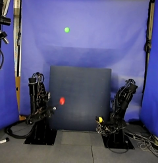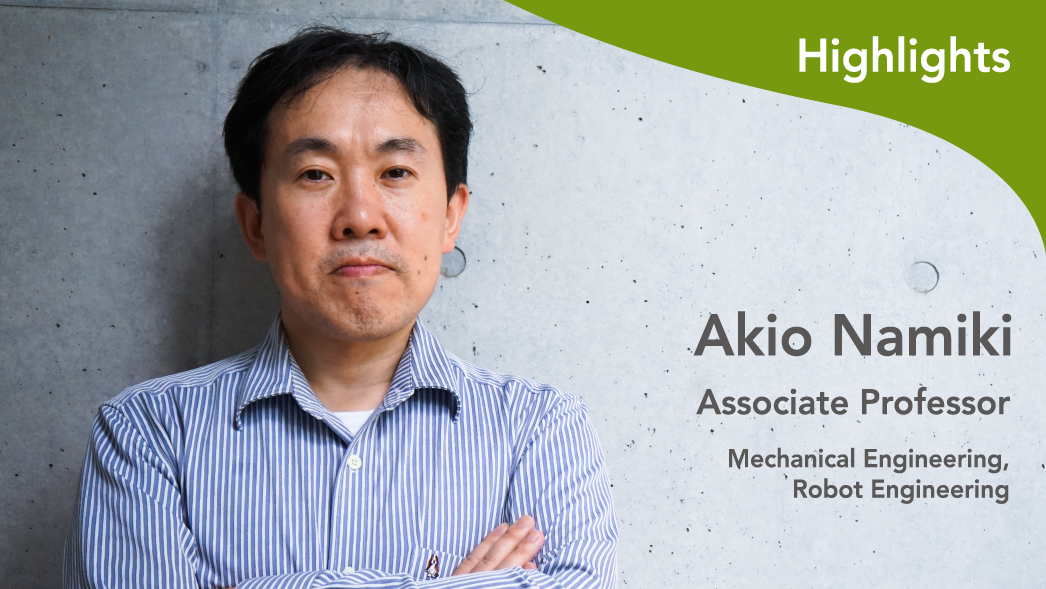By implementing this high-speed vision as a robot’s eyes, we can dramatically improve the robot’s performance. Concretely, the technology allows us to gain the following advantages:
- We can make robots to measure high-speed movements that are not capturable to human eyes.
- We can increase the response speed of the robot to visual stimuli.
- We can make image processing itself simplified as the change of images between frames is a little.
Currently, in our lab, we are applying a high-speed vision to various robots. In the research on “high-speed target tracking,” we developed an algorithm using high-speed monocular vision to estimate the 3D position and orientation of an object. By optimizing the evaluation function based on the target’s contour and texture information in real-time, it estimates the position and orientation of the object. By using this algorithm, we succeeded in tracking fast-moving 3D objects [1].
In the study of “robotic manipulation,” we developed ball-juggling robots using high-speed vision and two high-speed hand arms. Efficient throw-up trajectory generation and high-precision catching with high-speed visual feedback allowed the robots to juggle three balls with two arms (Figure 1) [2].
In the work on “fast visual servos to control drone flight,” to develop a flying robot with bird-like agile autonomous flight, we implemented high-speed vision to a drone. The visual servo is a theoretical framework that combines visual information processing and the aircraft’s control system. It is a keystone of a stable control system. Using a high-speed monocular camera and a parallel processing unit for image processing, we implemented visual feedback control with a rate of 30 Hz. We succeeded in tracking the flight of a moving target [3].
In the work on “fast visual servos to control drone flight,” to develop a flying robot with bird-like agile autonomous flight, we implemented high-speed vision to a drone. The visual servo is a theoretical framework that combines visual information processing and the aircraft’s control system. It is a keystone of a stable control system. Using a high-speed monocular camera and a parallel processing unit for image processing, we implemented visual feedback control with a rate of 30 Hz. We succeeded in tracking the flight of a moving target [3].

Reference
- [1] Yang Liu, Pansiyu Sun, and Akio Namiki, Target Tracking of Moving and Rotating Object by High-Speed Monocular Active Vision, IEEE Sensors Journal, 20(12), pp.6727-6744, 2020,
DOI: 10.1109/JSEN.2020.2976202 - [2] Akio Namiki, Juggling Robot and Air-Hockey Robot. Journal of the Robotics Society of Japan. 38(4), pp.307-12, 2020,
DOI: 10.7210/jrsj.38.307 - [3] Hsiu-Min Chuang, Dongqing He, and Akio Namiki, Autonomous Target Tracking of UAV Using High-Speed Visual Feedback, Applied Sciences, 9(21), 4552, 2019,
DOI: 10.3390/app9214552
Profile
Akio Namiki
Graduated from the University of Tokyo in 1999. Ph.D. Lecturer at the University of Tokyo's Graduate School of Information Science and Technology since 2014; associate professor at Chiba University since 2008. He specializes in robotics.


